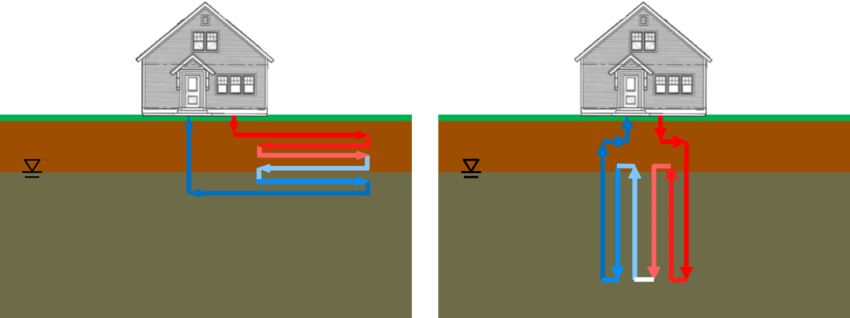As the world attempts to be more energy efficient, people everywhere are looking for more ways to maximize their efforts, especially when it comes to new construction. Geothermal heat loops prove to be an energy efficient and cost effective HVAC system that many are turning to.
 Source: Cory A. Kramer, Research Gate
Source: Cory A. Kramer, Research Gate
What Is a Geothermal Heat Loop?
A Geothermal Heat Loop, also known as a Ground Source Heat Pump, is a means of temperature control which either extracts heat or gives heat to the ground. Essentially an energy efficient HVAC system, this pump works to cool and heat large scale facilities and businesses or even homes and offices.
The whole process works in the same way as a traditional air conditioning system does. A heat exchanger exhausts some of the cooling energy into your HVAC system, while fluid travels through an expansion valve, allowing for the heat to be absorbed by the ground. Basically, it’s a process of transferring heat to the subsurface.
These systems can be done horizontally or vertically depending on a multitude of factors including the lithology or heat differential. Based on efficiency, these systems are designed specifically for the area they are intended for.
What Are the Benefits of Geothermal Heat Loops?
There are a multitude of benefits to being energy efficient with a Geothermal Heat Loop:
1. Cost SavingsThe longterm savings often outweigh the initial capital cost. Though energy efficient investments such as this may seem like a lot upfront, they generally can be leveraged to outweigh the initial expenditure.
2. Less Energy ConsumptionThe amount of energy used to operate the system is significantly less than a traditional HVAC system, as geothermal loops are closed loops. Meaning, you can have this system go deep into the earth’s surface with a very low voltage pump, as it doesn’t see any head pressure. Furthermore, the biggest energy consumer in this system is the condenser, and the condenser still uses signifanctly less energy than a true refrigerant used in more traditional systems.
3. Excess Heat Capacity
Typically, this system generates an excess of heat when operating, allowing the user to have hot water. Generally speaking, this system can deliver around 85% of hot water traditionally needed.
4. Tax IncentivesGeothermal Heat Loops typically tend to be a larger investment upfront. That’s why there are many tax incentives to help offset the initial costs. Furthermore, many institutions find that there are grants available to help fund their energy efficient HVAC system.
In business for 23 years, Talon/LPE possesses the drilling knowledge and licensing to get your Geothermal Heat Loop project done right. Our experienced drilling team operate multiple drilling rigs that are equipped to handle larger installations. Contact a project manager today using the button below to get more information.


